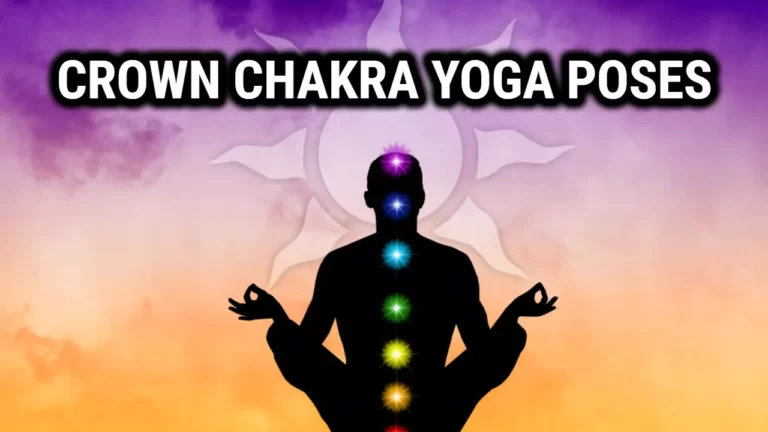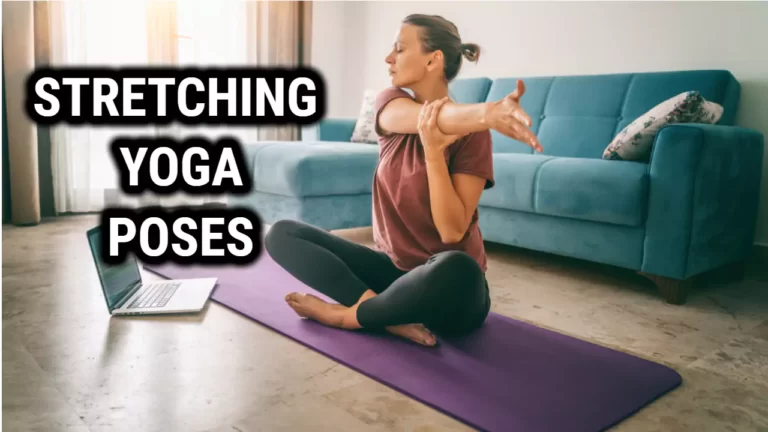What Is Shakti Yoga? – Unleash The Power within and Connect with the Divine

Shakti Yoga is a form of yoga that focuses on the feminine energy or represents feminine energy within all of us. It is based on the belief that shakti energy, or creative energy, can be awakened through mantra and sun salutation and various yoga poses. Shakti in Sanskrit means power
This practice combines physical poses with breathing exercises to cultivate strength and flexibility in the body and mind. Aspects of Shiva and Shakti are used to explore the chakra system, which helps to add balance to our daily lives.
A trained Shakti Yoga teacher will guide students through this process, and there are many yoga teacher training programs available for those wishing to learn more about this practice.
Through Shakti Yoga, we are able to connect with our own individual inner power and access that energy within ourselves. By focusing on self-awareness we can strengthen our bodies as well as gain insight into our creative potential.
Shakti Yoga involves cultivating self-love and cultivating strength, flexibility, and creative energy.
Benefits Of Shakti Yoga

This style focuses on cultivating one’s inner power and strength, leading to increased physical and mental resilience. Shakti yoga is an empowering practice for all levels of practitioners, from beginners to experienced yogis.
The benefits of shakti yoga are plentiful. After practicing shakti yoga, practitioners often report feeling a greater sense of inner peace, improved focus, and an enhanced ability to manage stress. It involves paying attention to the messages your body sends and cultivating an awareness of the energy flow throughout your body.
Physically, shakti yoga can help tone the body’s muscles and improve flexibility through its challenging postures. Additionally, this type of practice encourages a deeper connection between body and mind by focusing both on physical movements and breathing techniques.
On a spiritual level, shakti yoga has the potential to open up new realms of insight into oneself and the world around them. Practitioners often experience an increased sense of self-awareness as well as an expanded understanding of their own purpose in life.
By connecting with one’s higher power through this type of practice, many find that they can better navigate life’s challenges with grace and ease. As we transition into the next section about ‘shiva and shakti power’, it is important to note how these two forces work together in harmony as part of our overall health and wellbeing.
Shiva And Shakti Power Flow
Shiva and Shakti power are two primary forces of the divine universe that are often seen as complementary aspects of the same energy. Shiva is associated with the traditional masculine aspects such as logic, stability, and structure, while Shakti is connected to the more expansive, creative feminine qualities like intuition, emotion, and flow.
In yoga practice and hinduism, Shiva and Shakti can be seen as a powerful balance between effort and relaxation that brings about a more harmonious union of body and mind.
The practice of shakti yoga can help us to cultivate both these forces within ourselves. By allowing the energy of shakti power to move through us in our postures and breathing techniques, we can bring forth the natural strength and resilience that resides within us all. This form of yoga also encourages a deeper connection to our own inner wisdom – an awareness that helps us recognize our true potential as spiritual beings on this journey called life.
Through regular practice of shakti yoga, we can begin to experience greater clarity in our thoughts and feelings. We will develop a stronger sense of self-trust and discover new pathways for growth that were previously hidden from view.
In essence, this type of practice allows us to tap into our divine feminine power so that we may fully embrace all aspects of ourselves – body, mind, heart, and soul – in order to create greater balance in our lives.
Typical Shakti Yoga Sequence
With an understanding of the power of shakti yoga, it is time to explore a typical sequence for this practice. A yoga teacher training shakti yoga class will provide a more in-depth look into the various poses and techniques used in shakti yoga, however here we will cover some basics that can be used as a foundation for further exploration.
The following are key elements of a shakti yoga sequence:
• Mindful Breathing: Inhale deeply through the nose and exhale slowly through the mouth, Experiment with different breathing patterns such as alternate nostril breathing and Ujjayi breath
• Asanas (poses): Focus on postures that activate your root chakra, such as Mountain pose or Child’s pose, Incorporate standing poses like Warrior 2 or Triangle for strengthening and balance
• Mantras: Utter chants that align with your intention – ‘Om Namah Shivaya’ is one example, Use mantras to create an energetic vibration throughout your body
These components form the building blocks of any shakti flow yoga practice. With patience and dedication, you can use this sequence to connect more deeply to yourself while awakening your inner power. From here, we can move onto exploring the types of poses used in shakti yoga.
Shakti Yoga Poses

Embarking on a shakti power flow yoga journey can be an incredibly empowering experience. To begin, it is essential to understand the types of poses and sequences used in this practice. This way, you can create a personalized yoga routine that best suits your needs.
- Mountain pose (Tadasana)
- Upward salute (Urdhva Hastasana)
- Standing forward bend (Uttanasana)
- Low lunge (Anjaneyasana)
- Plank pose (Phalakasana)
- Four-limbed staff pose (Chaturanga Dandasana)
- Upward facing dog pose (Urdhva Mukha Svanasana)
- Downward facing dog pose (Adho Mukha Svanasana)
- Low lunge (Anjaneyasana)
- Standing forward bend (Uttanasana)
- Upward salute (Urdhva Hastasana)
- Mountain pose (Tadasana)
Can Shakti Yoga Practice Help With Weight Loss?
It may come as a surprise, but shakti power yoga has nothing to do with weight loss. Despite what many people may think, practicing this form of yoga does not result in dramatic and immediate weight loss. Instead, it is designed to help you tap into the spiritual energy within you and find your inner strength and power.
Yoga practitioners who practice shakti power yoga are more likely to experience increased overall wellbeing rather than significant weight loss. As such, it can be used as part of an overall health and fitness plan that focuses on healthy eating habits and exercise.
Additionally, by connecting with your inner strength through this practice, you can gain greater control over your body’s responses and reactions – which can then help you better manage stress levels or cravings associated with unhealthy eating habits or overeating.
The goal of shakti power yoga is not to lose weight quickly, but rather to bring balance back into your life so that you can continue living a healthy lifestyle in the long-term – without having to rely on diets or quick fixes.
While it is not a replacement for other forms of exercise, it can be an effective way to build confidence in yourself and make healthier lifestyle choices – all while having fun!
With the right practice, shakti power yoga can certainly help promote physical wellbeing – but its real power lies in unlocking your inner potential for personal growth.
Shakti Yoga Wear

As an essential part of your shakti power yoga practice, finding the right clothing to wear can greatly enhance your experience.
Wearing comfortable and supportive clothes that are specifically designed for shakti power yoga can help you feel connected with the divine feminine energy within you and tap into the powerful energy of shakti. Here are some things to consider when choosing shakti yoga wear:
• Comfort: Make sure you choose clothes that are comfortable and allow for a full range of motion as you flow through your practice.
• Support: Look for clothes that offer support in key areas like the hips, thighs, and waist. This will help ensure proper alignment during postures and provide additional stability.
• Breathability: Choose fabrics that allow for breathability so you stay cool and dry during your practice.
• Aesthetics: If you enjoy the look of certain outfits or colors, feel free to express yourself through your clothing choices!
Shakti power yoga is all about connecting with your inner strength and expressing yourself freely – what better way to do this than with clothing that reflects your unique style? By wearing that is comfortable, supportive, breathable, and aesthetically pleasing, you can fully immerse yourself in the power of shakti while achieving maximum comfort throughout your practice.
Also Read: What To Do Before Starting Power Yoga
Frequently Asked Questions
What Is The Difference Between Shakti Yoga And Other Types Of Yoga?
It differs from other types of yoga due to its focus on feminine energy, or shakti. This type of yoga emphasizes the divine feminine power within each person and encourages practitioners to connect with their inner strength and power.
The practice of shakti yoga is based on the concept of aligning students with the Shiva/Shakti principles. The Shiva/Shakti principle refers to the balance between male and female energies. In this type of yoga, practitioners utilize breathing techniques and postures to create a powerful connection between mind, body, and spirit. Furthermore, this form of yoga incorporates movement such as dance-like postures to awaken one’s inner goddess and access her divine power.
Unlike other forms of yoga that tend to be focused solely on physical poses, shakti yoga also includes meditation, chanting, mantras, ritualistic practices, sound healing, and self-reflection exercises.
All these practices are used to cultivate awareness around our personal power as well as increase energy levels for greater mental clarity and emotional balance. By connecting with our inner goddess we can gain a deeper understanding of ourselves and our relationship with the world around us.
Is Shakti Yoga Suitable For All Fitness Levels?
Shakti yoga is an ancient practice that is gaining popularity in the modern fitness world. It is a type of hatha yoga, but it has a unique style and focus compared to other forms of yoga. So, is shakti yoga suitable for all fitness levels? Let’s explore this question with an allegory.
Imagine you have been invited to a royal banquet hall. To get in, you must first pass through a set of doors. As you approach them, one door appears to be locked with an intricate lock system, while the other opens easily without any effort from your side. Which door do you choose?
The same principle applies to shakti yoga: those who are new to the practice can use the ‘open door’ of basic poses and transitions, while more experienced practitioners can unlock their full potential by exploring advanced postures and sequences. This makes shakti yoga suitable for everyone – from beginners to experts – as everyone can find something that suits their level of fitness.
TIP: Before taking on any advanced pose or sequence, take your time building up your strength and flexibility gradually by starting off with simpler postures and flows. This will ensure that you get maximum benefits from your practice while minimizing risks of injury or strain on your body.
How Long Does A Typical Shakti Yoga Practice Take?
This is an important question for anyone considering taking up this form of yoga. Shakti yoga is renowned for its ability to create a deep connection between mind and body, and as such, the duration of a practice session can vary greatly depending on the person.
Typically, a beginner’s Shakti yoga practice may last anywhere between 15 minutes to an hour. During this time, practitioners will focus on developing a strong connection with their breath and physical body while performing various postures or poses. As they progress, they may choose to extend the length of their sessions in order to experience deeper relaxation and greater levels of mental clarity.
Shakti yoga offers many benefits that come with regular practice – increased strength, flexibility and balance; enhanced concentration; improved sleep; better posture; and reduced stress levels. The amount of time spent exploring these benefits through this style of yoga depends largely on how much time you are willing to invest in it. With commitment and dedication, even someone who leads a busy lifestyle can find ways to make time for Shakti yoga in their daily routine.
Is There An Ideal Time Of Day To Practice Shakti Yoga?
The answer is yes: Morning.
Practicing Shakti yoga in the morning can help you start your day off right. When done consistently each morning, you can use it to set yourself up for success for the rest of the day. It helps you to center your mind and body before taking on whatever tasks lie ahead. Additionally, the physical benefits of practicing Shakti yoga can help wake up your muscles and joints while also preparing them for a more strenuous workout later if desired.
Morning is widely acknowledged as the best time to practice Shakti yoga because it gives practitioners ample time during their day to complete other tasks afterwards and not feel rushed or overwhelmed by having too much to do in one day. This allows one to focus on being mindful during their practice without feeling overwhelmed by all they have left to do later on in their day.
In short, practicing Shakti yoga in the morning offers many advantages that can help practitioners maximize their potential throughout the rest of their day while also providing long-term mental and physical health benefits.
Related Read: Root (Muladhara) Chakra Yoga Poses
Conclusion
Shakti Yoga is a powerful and transformational form of yoga that can help one to unlock their inner strength, energy and creativity. It has many benefits, from improved physical health and mobility to emotional balance and mental clarity. Whether you are a beginner or an experienced yogi, Shakti Yoga is suitable for all fitness levels and provides the opportunity to grow both physically and spiritually.
Overall, Shakti Yoga is a wonderful practice that can bring about positive change in many areas of life. It can help one to deepen their yoga practice while also providing an opportunity to gain greater insight into oneself. By taking the time to explore the various poses and movements associated with this type of yoga, one can discover their true potential both mentally and physically – transforming their life along the way!





